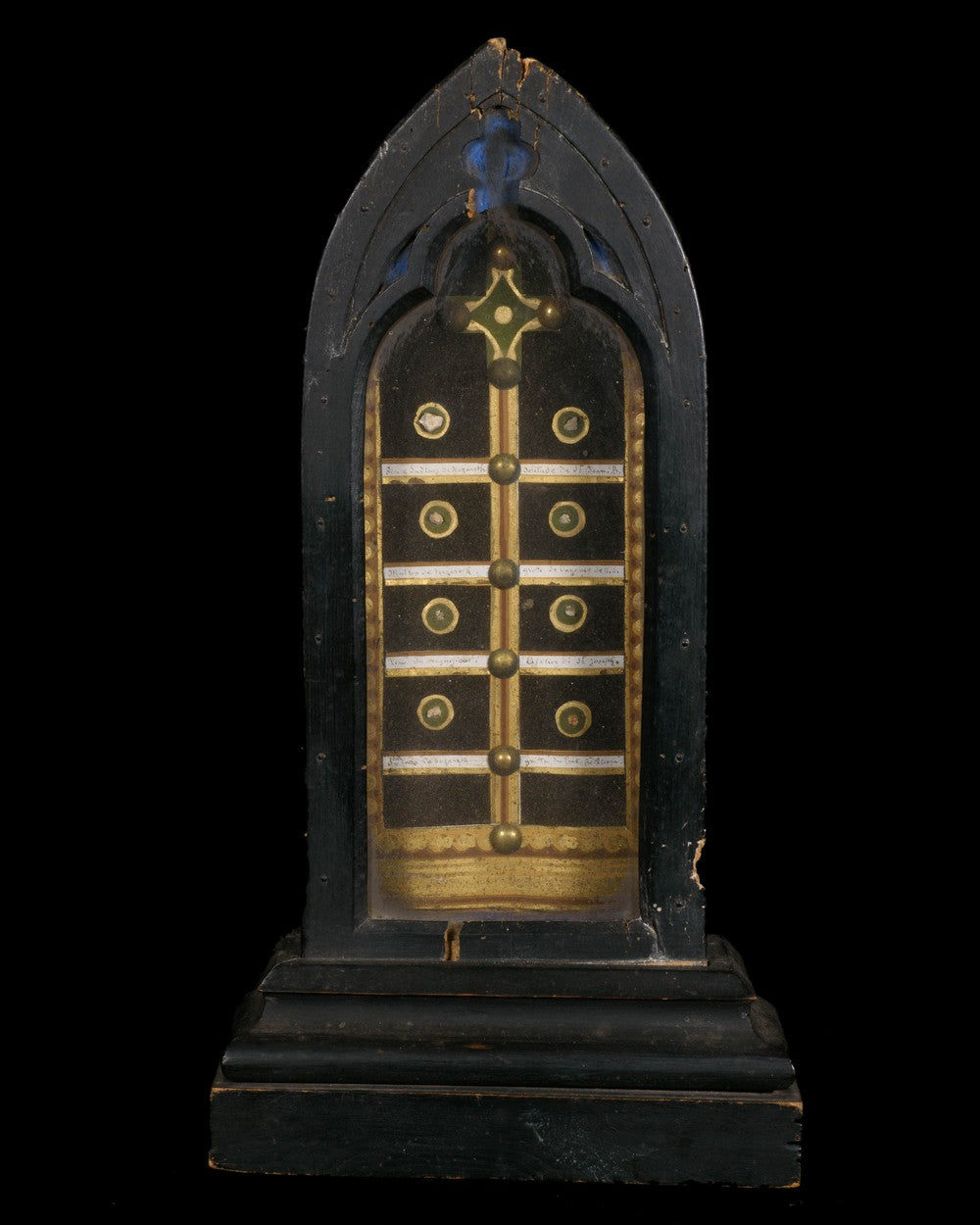ALTAR RELIQUARY OF THE HOLY LAND
ALTAR RELIQUARY OF THE HOLY LAND
Shipping calculated at checkout.
Our prices are in euros, the prices converted in dollars or other currencies can vary according to the rate.
Worldwide shipping
ref: #RK00-312Couldn't load pickup availability
This 19th century altar reliquary is an exceptional and very unusual piece. Made in the late 19th century, this ebonized wood reliquary features a remarkable neo-Gothic design, characteristic of the Victorian era. Its elaborate and detailed appearance is a testament to the refined craftsmanship of the era.
This particular reliquary has a fascinating history, as it originated in an ancient chapel that served as a place of worship and shelter for a collection of relics from the Holy Land. These relics, linked to sacred and historical events, add a spiritual and symbolic dimension to the object. Their presence gives the reliquary an aura of veneration and mystery, creating a tangible link with religious history.
The function of the altar reliquary is to shelter and showcase the holy relics it contains. Its unique character, associated with its singular history, makes it a rare and precious collector's item for lovers of sacred art and religious antiquities. Every detail of this piece evokes a bygone era, when faith, art and history were intertwined in the creation of exceptional religious objects. Thus, this reliquary represents not only a material object, but an open door to the past, evoking the spirituality and devotion which marked its era of origin.
The reliquary houses the relics of:
With its original glass. Not open
PERIOD : 19th century.
SIZE : 38cm X 20cm
SIZE : 15" X 7.9"
In addition to its historical richness and exceptional aesthetics, note that this 19th century reliquary has some imperfections, testifying to its passage through time. The signs of wear, chips and cracks reveal not only its age, but also the multiple moments of devotion it has witnessed.
These imperfections add an extra dimension to its story, highlighting the authenticity and patina of time. Each scratch seems to tell a story, recalling the past generations who venerated this reliquary. These signs of wear testify to the long and rich history of this object, further linking it to a past where faith and devotion were central.
Thus, these imperfections are not simply alterations, but silent witnesses to the passage of time, giving the object an aura of venerability and mystery. These marks of the past make this piece a relic not only because of the sacred fragments it houses, but also as a tangible imprint of a bygone era, preserved in the weathered and worn wood of the remarkable altar reliquary.








